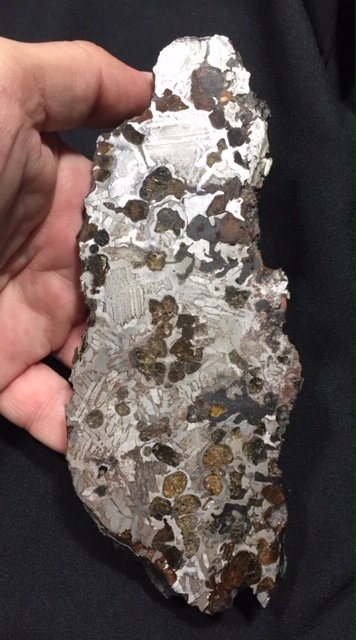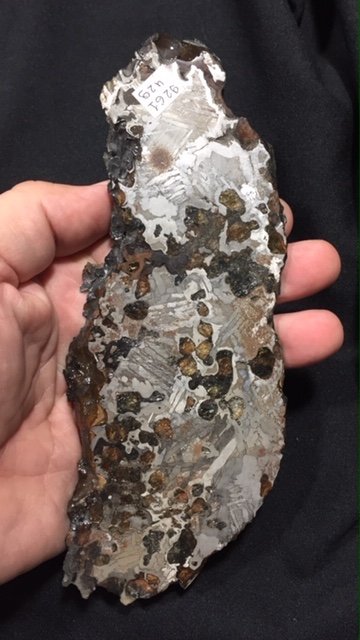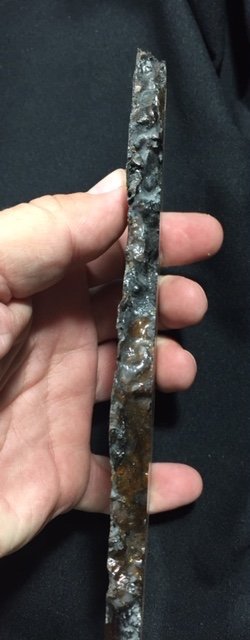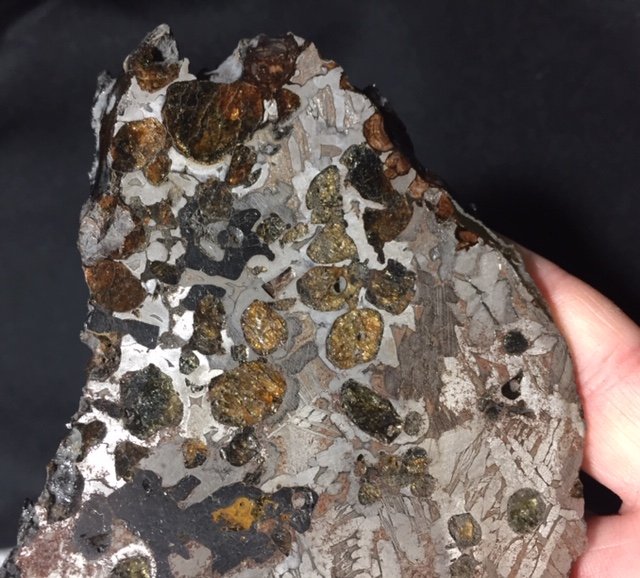 Image 1 of 6
Image 1 of 6

 Image 2 of 6
Image 2 of 6

 Image 3 of 6
Image 3 of 6

 Image 4 of 6
Image 4 of 6

 Image 5 of 6
Image 5 of 6

 Image 6 of 6
Image 6 of 6







Beautiful, large SEYMCHAN meteorite slice! An awesome pallasite, 430g!
This amazing slice of the iconic Seymchan (Seym-chan) meteorite shows both the Widmanstaetten pattern the coarse octahedrite and the large pallasitic olive crystals!
When the main mass was discovered in Russia’s Far East region in 1967, no olivine crystals were visible in the cuts made by the Russian Academy of Sciences. The fall was therefor classified as an anomalous octahedrite.
Not until 2004 was more material recovered, and some of the newer pieces clearly show it to be a pallasite (though large sections are solid FeNi…).
The “anomalous” classification stems from high Iridium levels, an element that is very rare on earth. This is in turn great for collectors, because (in part due to the Ir) Seymchan is one of the most stable and rust-resistant pallasites ever found.
Slab measures about 7 ¼” x 3” x ~⅝” thick.
This amazing slice of the iconic Seymchan (Seym-chan) meteorite shows both the Widmanstaetten pattern the coarse octahedrite and the large pallasitic olive crystals!
When the main mass was discovered in Russia’s Far East region in 1967, no olivine crystals were visible in the cuts made by the Russian Academy of Sciences. The fall was therefor classified as an anomalous octahedrite.
Not until 2004 was more material recovered, and some of the newer pieces clearly show it to be a pallasite (though large sections are solid FeNi…).
The “anomalous” classification stems from high Iridium levels, an element that is very rare on earth. This is in turn great for collectors, because (in part due to the Ir) Seymchan is one of the most stable and rust-resistant pallasites ever found.
Slab measures about 7 ¼” x 3” x ~⅝” thick.
This amazing slice of the iconic Seymchan (Seym-chan) meteorite shows both the Widmanstaetten pattern the coarse octahedrite and the large pallasitic olive crystals!
When the main mass was discovered in Russia’s Far East region in 1967, no olivine crystals were visible in the cuts made by the Russian Academy of Sciences. The fall was therefor classified as an anomalous octahedrite.
Not until 2004 was more material recovered, and some of the newer pieces clearly show it to be a pallasite (though large sections are solid FeNi…).
The “anomalous” classification stems from high Iridium levels, an element that is very rare on earth. This is in turn great for collectors, because (in part due to the Ir) Seymchan is one of the most stable and rust-resistant pallasites ever found.
Slab measures about 7 ¼” x 3” x ~⅝” thick.